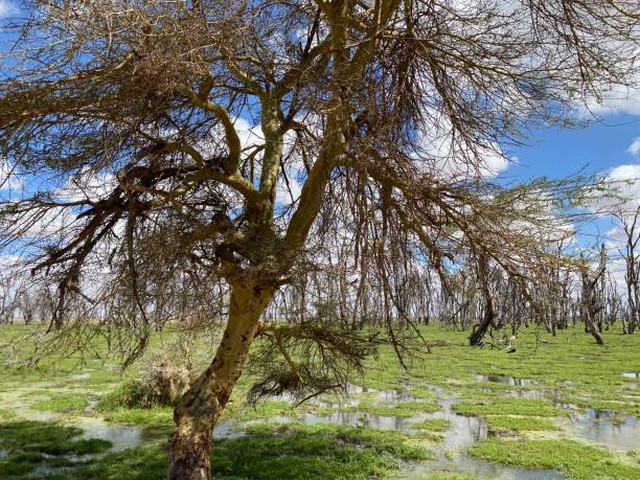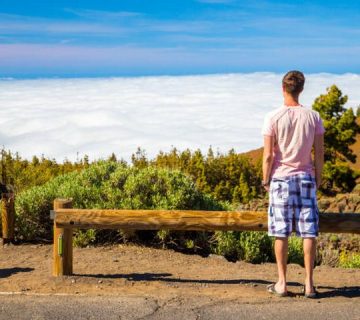Journey Through Time: Kilimanjaro Trekking and Tanzanian History
Introduction: Embracing the Majesty of Kilimanjaro
As you lace up your hiking boots, imagine stepping not just onto a trail, but into a vivid tapestry of history and culture that stretches back thousands of years. At Kilimanjaro Centre for Trekking and Ecotourism (KCTE), we believe that summiting Mount Kilimanjaro is more than just a climb; it’s an immersive journey through the heart of Tanzania’s rich heritage. This majestic mountain isn’t only the highest peak in Africa but a storied sentinel watching over the unfolding of Tanzanian history.
The Heartbeat of Tanzania: Kilimanjaro’s Historical Significance
The Early Inhabitants
Long before it became a beacon for trekkers worldwide, Kilimanjaro played a crucial role in the lives of local tribes. The Chagga people, the mountain’s primary inhabitants, have lived on its fertile slopes for centuries, cultivating bananas, yams, and coffee. The mountain provided a natural fortress during times of conflict and a spiritual sanctuary in peace, deeply integrated into their cultural lore and practices.
The Colonial Footprints
The narrative of Kilimanjaro took a dramatic turn in the late 19th century during the age of exploration and colonialism. European explorers, drawn by the mysterious snow-capped mountain on the equator, began expeditions that would later impact the entire region’s destiny. The stories of these expeditions are etched into the very routes now used for trekking, each step on the Machame or Marangu routes echoing the footsteps of those early adventurers.
The Spirit of Adventure: Trekking Routes That Tell a Story
Marangu: The "Coca-Cola" Route
The Marangu route, historically favored due to its relatively gentle slopes and direct path, is often dubbed the "Coca-Cola" route. This path is rich in history, lined with remnants from earlier expedition camps and offering insights into the mountain’s colonial past. Its historical huts, some of which date back to the early 20th century, tell tales of the countless trekkers who have embarked on this journey before you.
Machame: The "Whiskey" Route
Contrasting its counterpart, the Machame route is known as the "Whiskey" route, not just for its challenging terrain but for the intoxicating beauty and diversity of landscapes it traverses. From lush rainforests to stark alpine deserts, this route offers a more immersive experience into the natural and historical layers of Kilimanjaro.
Kilimanjaro Today: Conservation and Culture
Preserving the Heritage
As one of Tanzania’s most iconic landmarks, Kilimanjaro is not only a hub for trekkers but also a focal point for conservation efforts. These endeavors aim to preserve both its environmental integrity and cultural heritage. As you walk the ancient paths, you become part of these ongoing efforts to ensure future generations can also experience this historical marvel.
Engaging with Local Communities
Kilimanjaro’s impact extends beyond its geological and historical importance; it is a vital part of the local economy. Trekking with KCTE means directly supporting the local communities through fair wages, sustainable practices, and cultural exchange. Each step you take helps maintain the trails and assists in the preservation of Chagga cultural heritage.
Why Trek with Kilimanjaro Centre for Trekking and Ecotourism (KCTE)?
Choosing KCTE for your Kilimanjaro adventure means more than just a climb; it means embracing the full spectrum of Tanzanian culture and history. Our expert guides, natives to this land with deep respect and knowledge of the mountain’s history, provide you with not just a journey to the summit, but a voyage through time.
- Expert Local Knowledge: Our guides are trained to offer you not just directions but stories that bring the history of Kilimanjaro to life.
- Sustainable Trekking: We are committed to eco-friendly practices that ensure the beauty and integrity of the mountain are maintained for future explorers.
- Cultural Immersion: Experience genuine interactions with local communities, from traditional Chagga meals to tales by the fireside under the stars.
Summary: Your Call to Adventure
As you contemplate the journey ahead, remember that trekking Kilimanjaro is an act of stepping through chapters of human endurance, natural wonders, and cultural richness. It’s a trek where every step tells a story, and every breath taken is a note in the symphony of this African giant’s history.
Are you ready to walk the paths of ancient warriors, explorers, and the guardians of this mountain? Join us at Kilimanjaro Centre for Trekking and Ecotourism (KCTE) for an adventure that transcends the physical landscapes, into the very spirit of Tanzania.
Frequently Asked Questions
Q: What is the best time of year to climb Kilimanjaro?
A: The best times to climb Kilimanjaro are during the dry seasons: January to mid-March and June to October.
Q: How fit do I need to be to undertake a Kilimanjaro trek?
A: While you don’t need to be an athlete, a reasonable level of fitness is required. We recommend engaging in cardiovascular training and strength exercises in the months leading up to your trek.
Q: What should I pack for my Kilimanjaro trek?
A: Essential items include thermal clothing, a sturdy pair of hiking boots, a sleeping bag suitable for sub-zero temperatures, a waterproof jacket, and plenty of layers. Don’t forget a camera to capture the breathtaking views and historic sites!
Q: How does KCTE contribute to local conservation efforts?
A: KCTE actively participates in environmental preservation initiatives, supports local wildlife conservation projects, and employs sustainable trekking practices that reduce environmental impact.
Embark on your journey through time with Kilimanjaro Centre for Trekking and Ecotourism. Because it’s more than a climb—it’s history, culture, and adventure woven into one unforgettable experience. Book your trek today and be part of something truly monumental!




